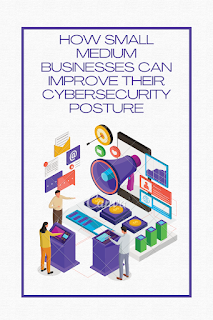As a small business, you may not realize just how vulnerable your organization is to cyberattacks. A cyberattack can damage your business' reputation, disrupt operations and even lead to financial losses.
To protect your business, follow these tips:
1. Train your employees on best practices. A lack of cybersecurity awareness among employees can lead to compromised accounts and stolen data. Ensure that all employees understand your organization's security policies. You should also train your employees to recognize phishing emails and other forms of social engineering attacks.
2. Invest in tools that limit information loss, monitor your third-party risk and fourth-party risk exposure, and help you respond to incidents effectively. A comprehensive incident response plan can also help you minimize business disruption if an attack occurs. Theses tools and plans can also help you better manage compliance requirements and meet other industry regulations.
3. Develop an incident response plan. Incident response plans should address how your organization will respond to a cybersecurity incident. Incident response plans should address not only technical responses, but also legal, public relations, and executive communications. The plan should include appropriate communication steps for informing employees, customers, and third parties about the status of incident and how the organization is responding.
4. Implement secure systems. You should ensure that all of your critical IT systems are properly secured to reduce the risk of data breaches and other attacks. End-user systems should be at least protected by anti-virus. Servers should be behind a strong firewall and it should be updated regularly with the latest security patches and firmware. Password should be complex and changed regularly. Backups should be regularly tested to ensure data can be restored quickly in the event of an attack.
5. Conduct regular risk assessments. Conducting regular risk assessments can help you identify potential risks and secure your sensitive data. You should conduct risk assessments on all of your systems, including computer system, wireless networks, physical systems and mobile devices.
6. Implement multi-factor authentication where possible as additional layer of protection, including for remote access, privileged users and critical assets. Most passwords can be easily cracked using password cracking tools or brute force attacks. Using multi-factor authentication can help protect your accounts from being hacked. In addition, it can also help reduce your risk of data breach by limiting access to systems and data from unauthorized users.

No comments:
Post a Comment